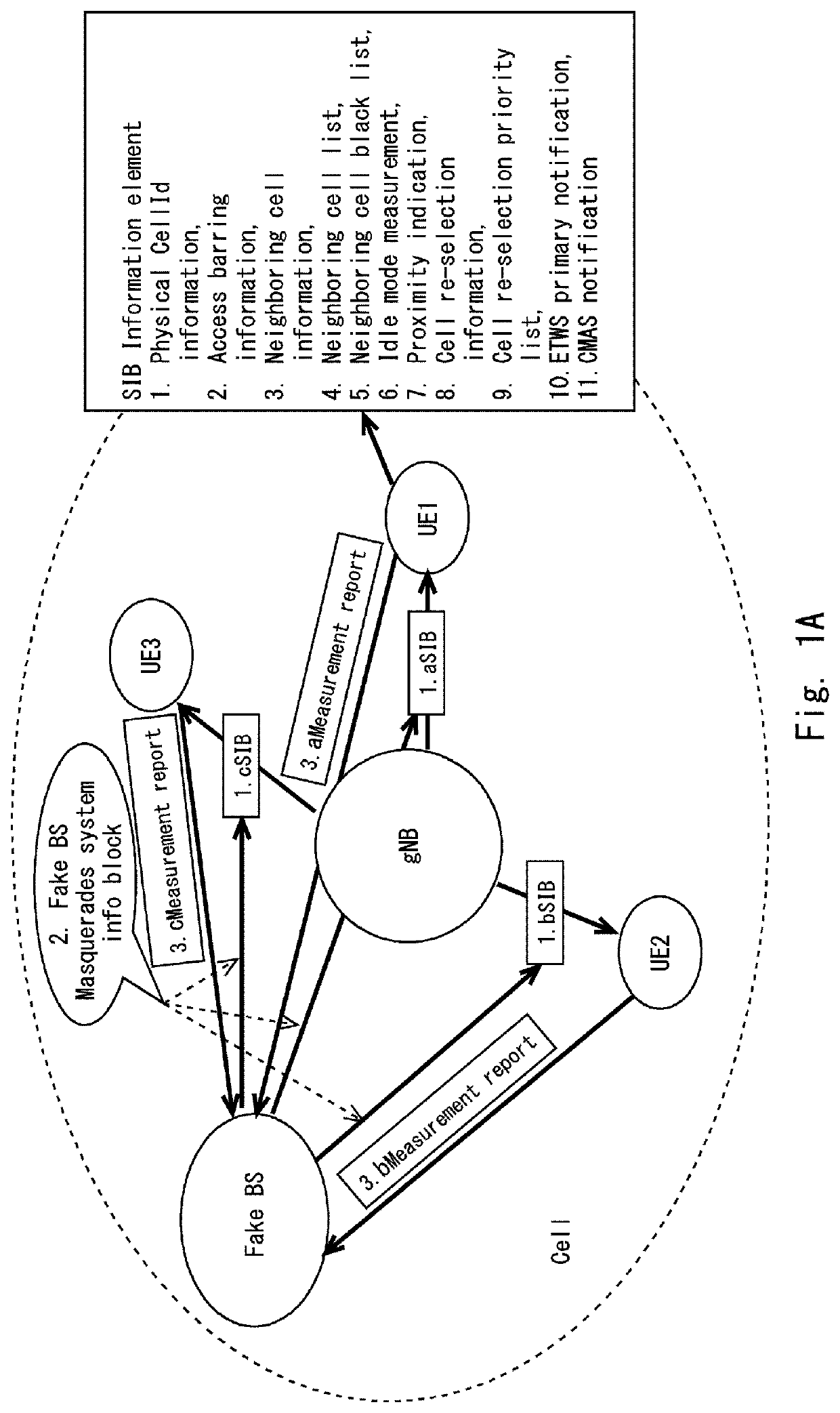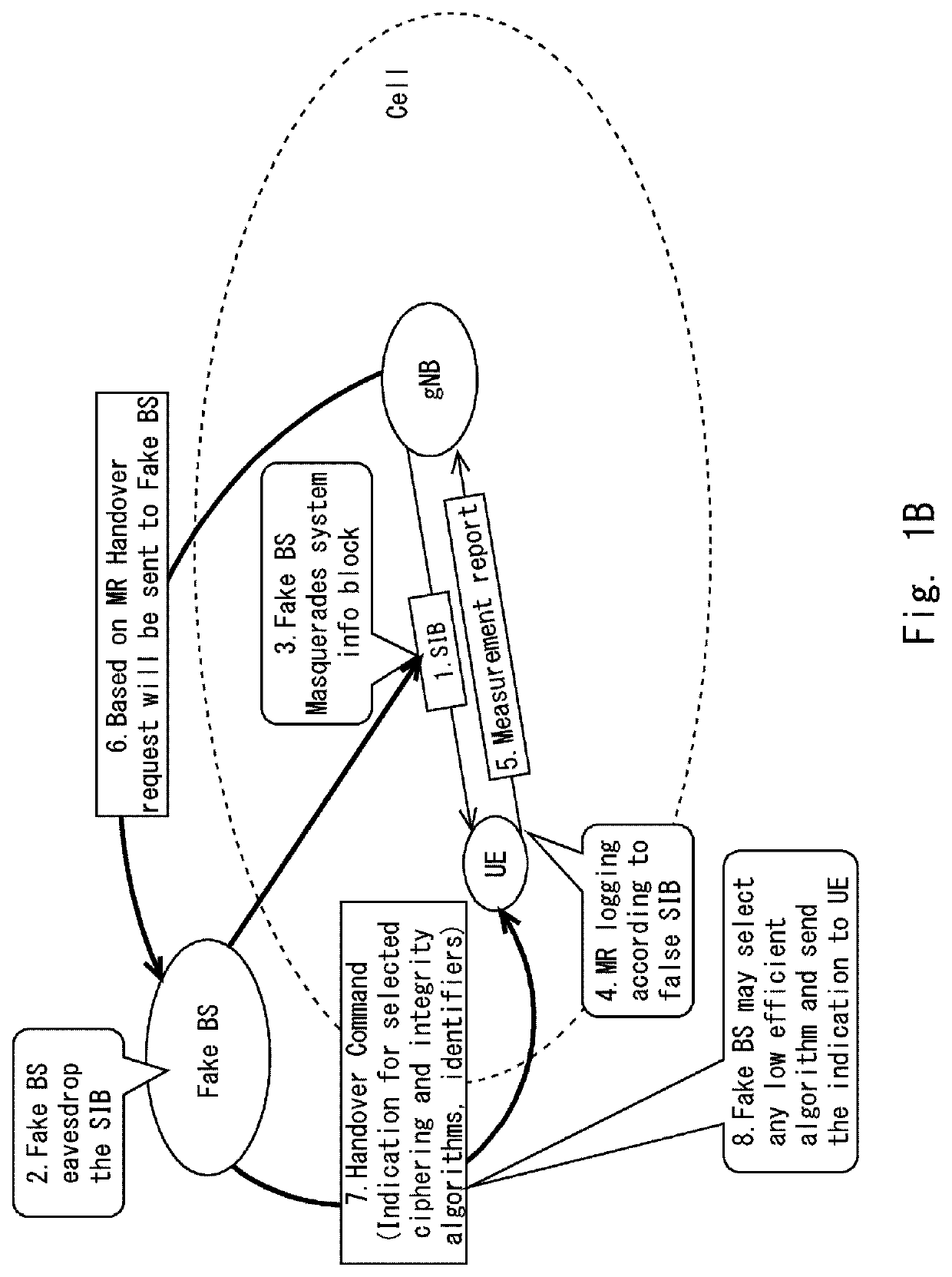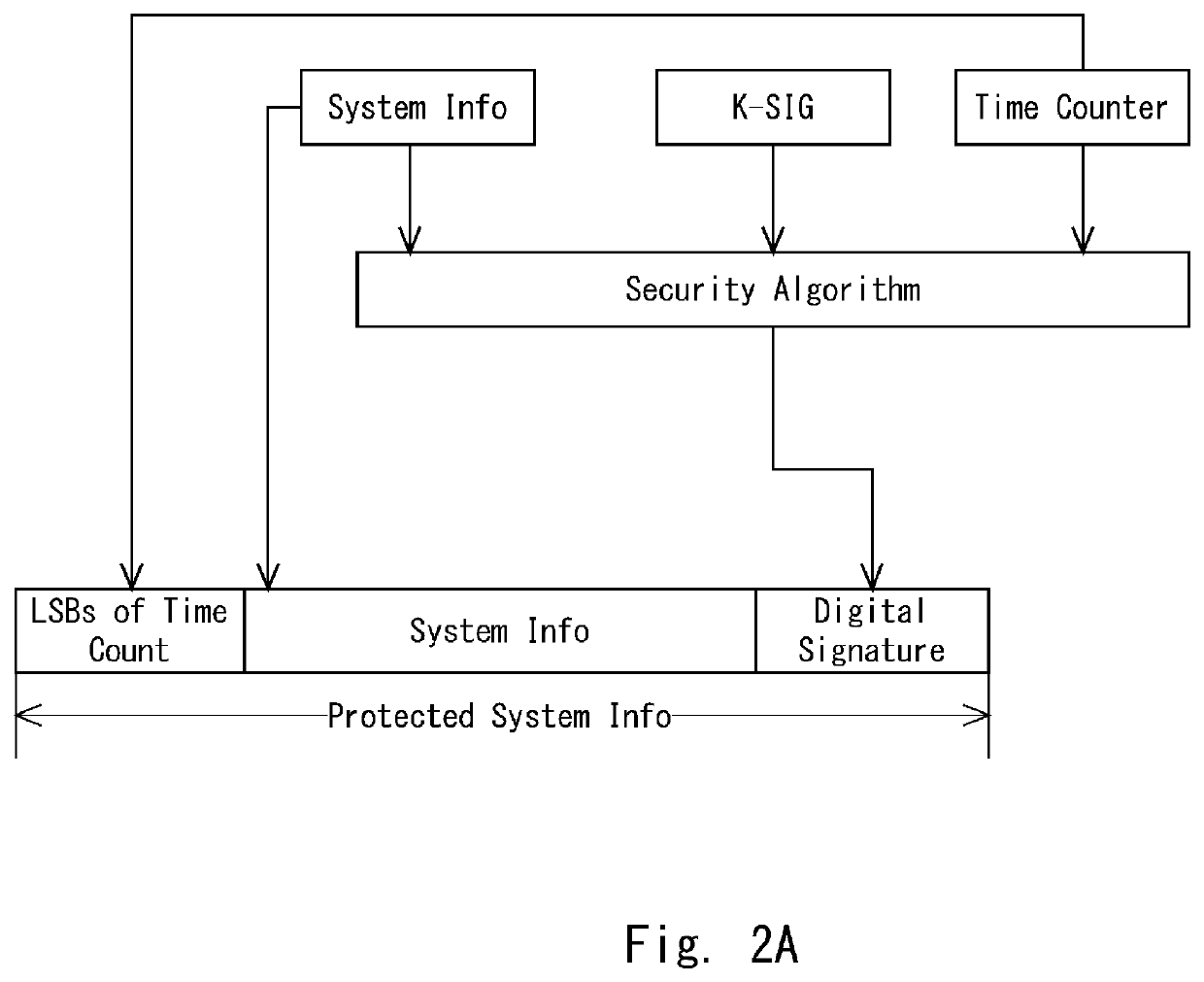Source base station, ue, method in wireless communication system
a wireless communication system and source station technology, applied in the direction of connection management, electrical equipment, security arrangements, etc., can solve the problems of denying services, ue does not validate the system information block, and does not know whether, etc., to achieve high coverage area, raise an alarm, and cost-effective
- Summary
- Abstract
- Description
- Claims
- Application Information
AI Technical Summary
Benefits of technology
Problems solved by technology
Method used
Image
Examples
Embodiment Construction
[0149]Accordingly, embodiments according to the present disclosure disclose a method and a source base station for preventing a User Equipment (UE) from attaching to a false base station. The method includes: generating, by the source base station, a UE specific Anonymity Challenge Parameter to the UE based on sensitive information from the UE, cell information, source base station information and an initial Anonymity Challenge Parameter assigned to a particular base station; and sending, by the source base station, a measurement command message including the UE specific Anonymity Challenge Parameter to the UE. Further, the method includes: receiving, by the source base station, an Anonymity Challenge Parameter acknowledgement as a response from the UE; and negotiating, by the source base station, the UE specific Anonymity Challenge Parameter with the UE to prevent the UE from attaching to a false base station.
[0150]In an embodiment, the UE specific Anonymity Challenge Parameter is ...
PUM
 Login to View More
Login to View More Abstract
Description
Claims
Application Information
 Login to View More
Login to View More - R&D
- Intellectual Property
- Life Sciences
- Materials
- Tech Scout
- Unparalleled Data Quality
- Higher Quality Content
- 60% Fewer Hallucinations
Browse by: Latest US Patents, China's latest patents, Technical Efficacy Thesaurus, Application Domain, Technology Topic, Popular Technical Reports.
© 2025 PatSnap. All rights reserved.Legal|Privacy policy|Modern Slavery Act Transparency Statement|Sitemap|About US| Contact US: help@patsnap.com



